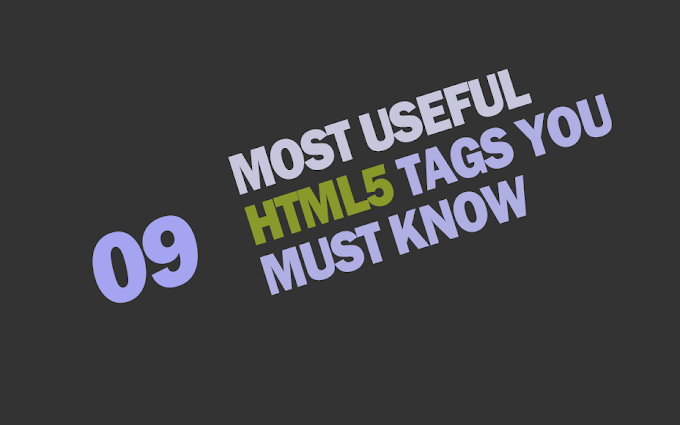Here is a list of some popular interview questions for React.js developers:
- What is React.js and why is it used?
React.js is a JavaScript library for building user interfaces. It is used to build reusable UI components and manage the state of those components.
- How does React handle updates to the DOM?
React uses a virtual DOM, which is a lightweight in-memory representation of the actual DOM. When a component's state or props change, React updates the virtual DOM and then determines the minimal set of changes that need to be made to the actual DOM.
- What is the difference between a state and a prop in React?
A state is a data structure that is managed and updated by a component, whereas a prop is a way to pass data from a parent component to a child component. Props are immutable, whereas state can be changed by the component.
- What is JSX and how is it used in React?
JSX is a syntax extension for JavaScript that allows you to include HTML-like elements in your JavaScript code. In React, JSX is used to describe the structure of a component's view.
- How does React handle events?
React uses a synthetic event system, which allows events to work consistently across different browsers. In React, events are handled using the on* syntax, such as onClick or onChange.
- What is the significance of React's component lifecycle methods?
React has a set of lifecycle methods that allow a component to update and render itself in response to changes in its props or state. These methods include componentDidMount, shouldComponentUpdate, componentDidUpdate, and componentWillUnmount.
- What is the significance of Redux in React?
Redux is a library that is often used with React to manage the state of a large or complex application. It provides a centralized store for the state of the application and a set of rules for how the state can be updated.
- What is the difference between a controlled and uncontrolled component in React?
A controlled component is one where the component's state is controlled by its parent component through props. An uncontrolled component is one where the component maintains its own internal state.
- What is the purpose of the key prop in React?
The key prop is used to uniquely identify a component within a list of components. This is particularly important when a list of components is re-rendered, as it allows React to efficiently update the list by identifying which items have changed.
- How do you implement routing in a React application?
React Router is a popular library used for implementing client-side routing in a React application. It allows you to declaratively map URLs to components, so that the appropriate component is displayed based on the current URL.
- What is the significance of React hooks?
React hooks are functions that allow you to use state and other React features in functional components. They were introduced in React 16.8 and are a way to use state and other features without having to convert a functional component into a class-based component.
- How does the context API work in React?
The context API allows you to pass data down through a component tree without having to pass props manually at every level. It provides a way to store and access global state, this reduces the amount of prop-drilling required in the application.
- How can you improve the performance of a React application?
React application performance can be improved by using shouldComponentUpdate lifecycle method, useMemo and useCallback Hooks, use of PureComponent, Virtualization, code splitting, lazy loading and server-side rendering.
- Can you explain Higher-Order Component (HOC)?
A Higher-Order Component (HOC) is a React component that wraps another component and provides it with additional functionality. It is a way to reuse component logic, it creates a new component that renders the wrapped component and can also provide it with additional props.
- Can you explain the concept of context in React?
Context in React allows a component to access data that is "up the tree" without passing props down through every level of the component hierarchy. This makes it easier to share data between components that are not directly related.
- Explain the concept of server-side rendering in React.
Server-side rendering is the process of rendering a React application on the server, rather than in the browser. This allows the initial HTML that is sent to the browser to include the rendered content, which can improve the performance and SEO of the application.
- What is the role of the key attribute in React?
The key attribute is used when rendering a list of items in React. Each item in the list should have a unique key, so that React can efficiently update the list when items are added, removed, or reordered.
- What is the purpose of the shouldComponentUpdate lifecycle method in React?
The shouldComponentUpdate lifecycle method is used to determine whether a component should re-render in response to changes in its props or state. This method is called before the render method, and it can be used to optimize the performance of the application by preventing unnecessary updates.
- How does React handle forms?
React handles forms by allowing the developer to maintain the state of the form in the component's state. The onChange event is used to update the state of the form, and the onSubmit event is used to submit the form data. The input elements in a form should be controlled components, which means that the value is set by the component's state, rather than by the default value of the element.
- How does React handle server-side communication (e.g. making API calls)?
React can handle server-side communication through the use of libraries such as Axios, fetch, or the built-in XMLHttpRequest or the more modern fetch() APIs. These libraries can be used to make HTTP requests to a server and retrieve data, which can then be passed down to the components as props.
- How do you handle routing in a React application?
Routing in a React application is typically handled with a library such as React Router. This library allows developers to define specific URL paths that correspond to different components, and it handles the logic for displaying the appropriate component when the path changes.
- How does React handle performance optimization?
React has several built-in features to help with performance optimization, such as the shouldComponentUpdate lifecycle method, and the use of a virtual DOM. Additionally, developers can use various tools like React profiler, and Chrome devtool to identify and troubleshoot performance issues.
- What is the difference between a controlled and uncontrolled component in React?
A controlled component is one where the component's state is used to set the value of an input element, and the component's methods are used to handle input events. An uncontrolled component, on the other hand, is one where the default value of the input element is used, and the component's methods are not used to handle input events.
- How to handle the cross-browser compatibility issues in React?
Cross-browser compatibility issues can be handled by using tools such as Babel, which transpile the JSX and ES6 code to be compatible with older browsers. Additionally, developers can use polyfills to add missing functionality to older browsers.
- How to debug React applications?
React applications can be debugged using browser developer tools such as Chrome DevTools or Firefox Developer Tools. The React Developer Tools, a browser extension for Chrome and Firefox, provides an interface to inspect the components and their state in React application. It also allows you to trace the component hierarchies and interact with the virtual DOM.
- What is the benefit of using an application state management library in React?
One of the benefits of using an application state management library such as Redux or MobX is that it helps to separate the state of an application from the components that display it. This makes it easier to reason about the state of the application, and it can also make the code more maintainable, testable, and scalable.
Conclusion
In conclusion, React is a widely used JavaScript library for building user interfaces, and being well prepared for interview questions is an important step in landing a job as a React developer. The questions in this article cover a wide range of topics, including React's features, lifecycle methods, performance optimization, state management, and debugging. By understanding the answers to these questions, you will be able to demonstrate your knowledge and skills to a potential employer, and increase your chances of landing a job as a React developer. Remember to practice and take your time in answering these questions and you'll be ready to tackle any questions thrown your way during your interview.
Motivation
Preparing for a job interview can be a daunting task, but with the right knowledge and preparation, you can feel confident and ready to tackle any question thrown your way. Remember that you have the skills and experience to excel as a React developer, and with this guide, you have all the tools you need to showcase your abilities to potential employers. So don't be afraid to put yourself out there and go after the job you want. Best of luck in your interview!





![[Cupons] Paid udemy courses for free](https://blogger.googleusercontent.com/img/b/R29vZ2xl/AVvXsEgYa-f_8UEE95d9stpdRzq6_DUq19avn09M2CVWIuQGI_PwaZBMcNhuHmPZQsw81GMeWwUY2Q-Cr66RoAmMq1f_pok6pdv-W86qc9_wWSxqXEq_RHYyRY0Ldly_yi2DSfyed4Cxiks6Nbzp/w680/Paid+udemy+courses+for+free.png)






0 Comments
If you have any question please ask?